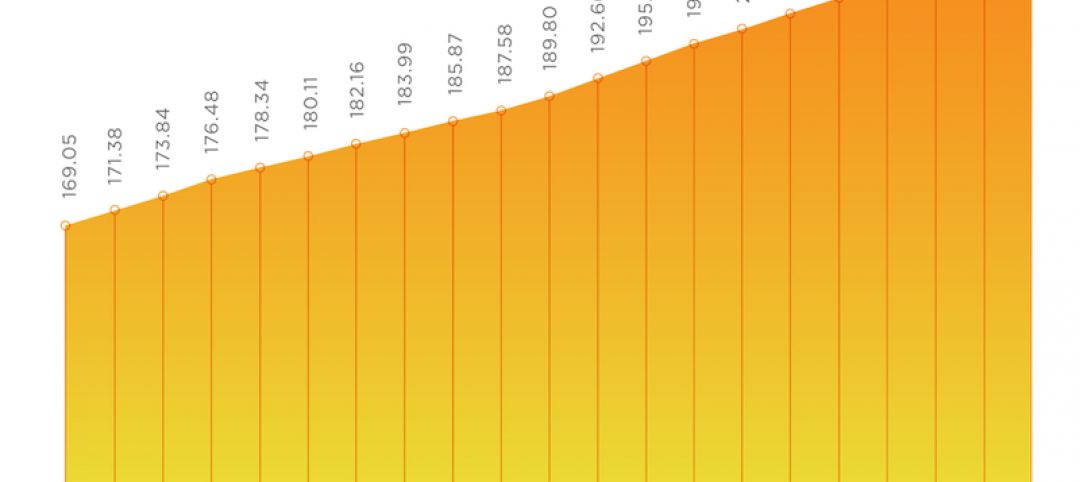I’ve been going to trade shows for more than 35 years, and it never ceases to amaze me how many suppliers I’ve never heard of. While there are always well-known brands on display, like Kohler and
Whirlpool, marketing strategies for most suppliers typically view the general public as an afterthought.
The relevance of brand recognition has always been debatable in the B2B universe. With notable exceptions like BASF, few manufacturers or industry groups see value in generating top-of-mind awareness for their products and services with consumers. It’s far more advantageous, their thinking goes, to aim at municipalities, developers, and their AEC partners.
“It’s not in their organizational DNA” to market to the public, observes Kimberly Jones, President of Butler/Till, a media planning firm.
But the public isn’t a passive bystander anymore. It is an avid stakeholder insisting that its input be factored into the design and construction of all kinds of projects: schools, offices, hospitals, multifamily housing, even sports arenas. Marketing that relegates the public to the sidelines misses an opportunity to influence—even tangentially—these influencers.
I was thinking about branding while standing on the periphery of the International WELL Building Institute’s booth at last month’s Greenbuild convention in Los Angeles, watching one of a steady stream of interviews with company execs and partners, presented to Greenbuild attendees. IWBI, which launched in 2013, is striving to create a brand. But for whom, I wondered?
Its WELL Building Standard stems from a larger wellness movement being spurred by a public that is demanding healthier home and work environments. But certification programs that measure and grade buildings and products have been mostly indifferent about propagating their brands.
The EPA’s Energy Star program, which has been around for 24 years, gained purchase as energy rates rose. But EPA’s WaterSense labeling program, which celebrates its 10th anniversary this year, has yet to muster that level of brand awareness, in part, because water is relatively inexpensive in most markets.
The WaterSense label is on 16,000+ product models. Through 2015, it has helped consumers reduce energy and water costs by $32.6 billion. Yet, fewer than one-quarter of Americans are aware of the brand, according to a GfK survey.
My guess is that the same is true, to a greater or lesser degree, of LEED, Green Globes, Cradle to Cradle, and other regimens that hold buildings and products accountable for their efficiency, sustainability, or healthiness. Imagine the marketing boost for manufacturers and builders if these certification programs more broadly impacted consumers’ decisions about what to buy or where to live and work?
The Cradle to Cradle label is on nearly 6,000 products under 400-plus corporate certificates. Those products include many consumer brands, from Shaw Industries (flooring) to Method (soap). The Cradle to Cradle organization is confident that the brand means something to “knowledgeable consumers” (read: Millennials), says Stacy Glass, the group’s VP of Built Environment.
But any consumer branding campaign would be futile without critical mass. “What I’d like to see is our label on one million products under 10,000 certificates across the built environment,” says Glass.
Related Stories
Market Data | Jan 19, 2021
Architecture Billings continue to lose ground
The pace of decline during December accelerated from November.
Market Data | Jan 19, 2021
2021 construction forecast: Nonresidential building spending will drop 5.7%, bounce back in 2022
Healthcare and public safety are the only nonresidential construction sectors that will see growth in spending in 2021, according to AIA's 2021 Consensus Construction Forecast.
Market Data | Jan 13, 2021
Atlanta, Dallas seen as most favorable U.S. markets for commercial development in 2021, CBRE analysis finds
U.S. construction activity is expected to bounce back in 2021, after a slowdown in 2020 due to challenges brought by COVID-19.
Market Data | Jan 13, 2021
Nonres construction could be in for a long recovery period
Rider Levett Bucknall’s latest cost report singles out unemployment and infrastructure spending as barometers.
Market Data | Jan 13, 2021
Contractor optimism improves as ABC’s Construction Backlog inches up in December
ABC’s Construction Confidence Index readings for sales, profit margins, and staffing levels increased in December.
Market Data | Jan 11, 2021
Turner Construction Company launches SourceBlue Brand
SourceBlue draws upon 20 years of supply chain management experience in the construction industry.
Market Data | Jan 8, 2021
Construction sector adds 51,000 jobs in December
Gains are likely temporary as new industry survey finds widespread pessimism for 2021.
Market Data | Jan 7, 2021
Few construction firms will add workers in 2021 as industry struggles with declining demand, growing number of project delays and cancellations
New industry outlook finds most contractors expect demand for many categories of construction to decline.
Market Data | Jan 5, 2021
Barely one-third of metros add construction jobs in latest 12 months
Dwindling list of project starts forces contractors to lay off workers.
Market Data | Jan 4, 2021
Nonresidential construction spending shrinks further in November
Many commercial projects languish, even while homebuilding soars.

















